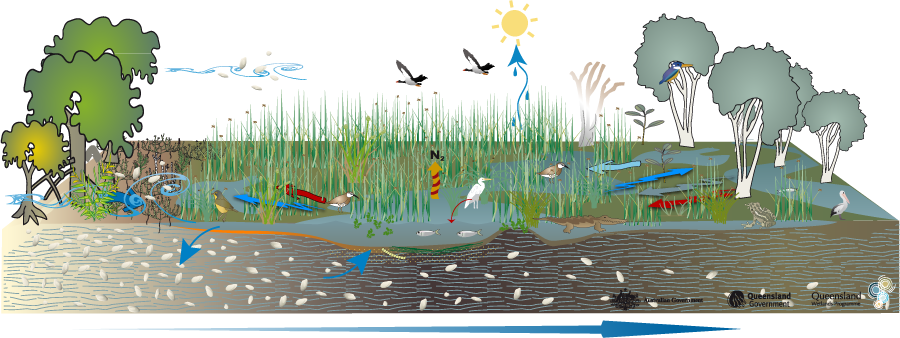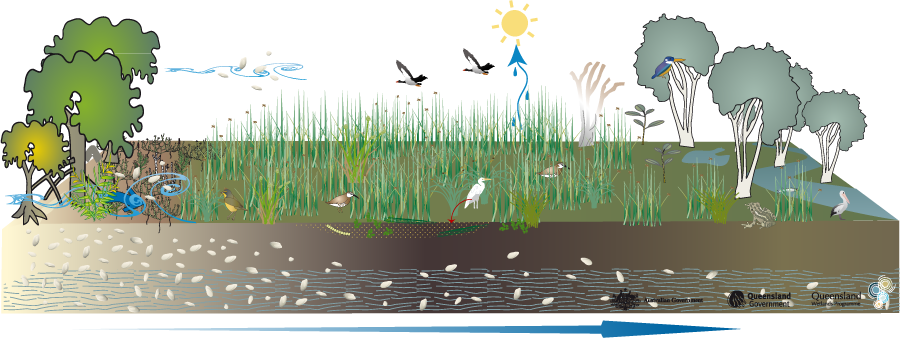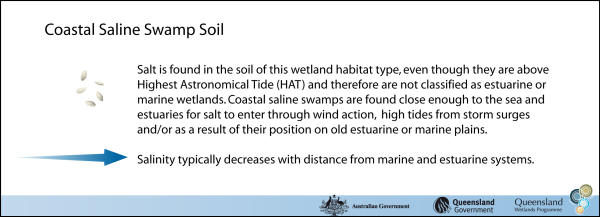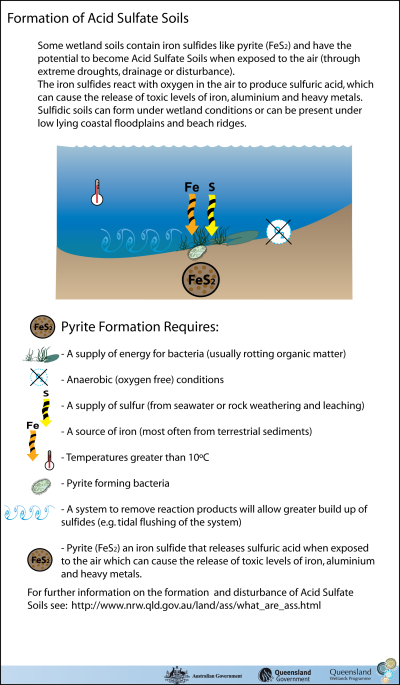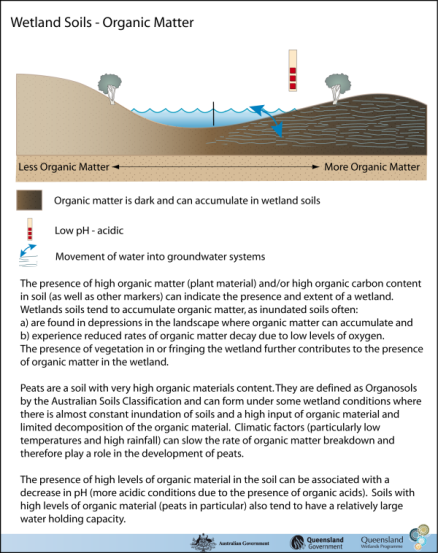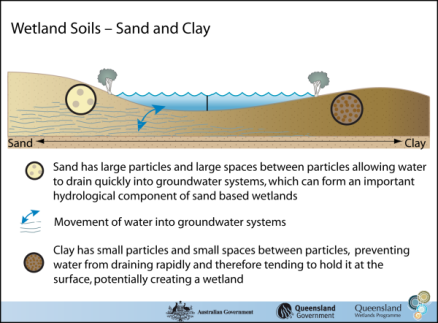|
|
Coastal and subcoastal saline swampCoastal and subcoastal saline swamp – GeomorphologyClick on elements of the model or select from the tabs below
Saline swamps are found on the more saline end of the palustrine spectrum, located in generally flat, low-lying coastal areas near estuaries and the sea. The geomorphologic setting for coastal saline swamp habitats tend to be depressions on old Quaternary estuarine deposits, minor basins, small depressions and poorly drained flats on marine or alluvial plains with gentle or minimal slope. Coastal saline grass-sedge wetlands adjoin or merge with a wide range of other wetland types. On marine plains, they lie between saltmarsh and mangrove estuarine wetlands and upland (non-wetland) ecosystems; on alluvial plains they may lie between river channels/levees and the high ground at the floodplain edge. They may be surrounded by infrequently inundated floodplain. Often they occur patchily within complexes of wetland types such as floodplain or non-floodplain tree swamps (coastal melaleuca swamps in particular) and braided river channels. Frequently, the boundaries of each type are not clear and may change over time as determined by patterns of rainfall and flooding.
Last updated: 22 March 2013 This page should be cited as: Department of Environment, Science and Innovation, Queensland (2013) Coastal and subcoastal saline swamp – Geomorphology, WetlandInfo website, accessed 8 May 2025. Available at: https://wetlandinfo.des.qld.gov.au/wetlands/ecology/aquatic-ecosystems-natural/palustrine/saline-swamp/geomorphology.html |

 — Department of the Environment, Tourism, Science and Innovation
— Department of the Environment, Tourism, Science and Innovation

